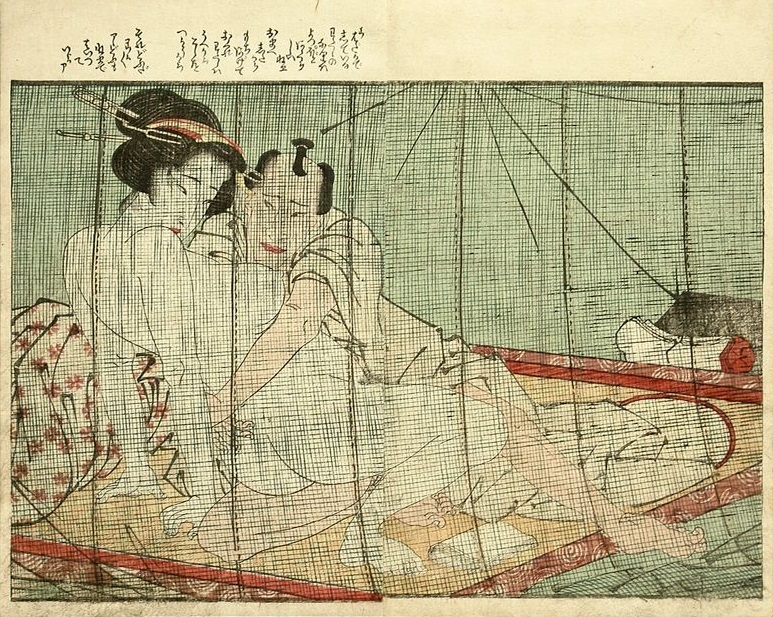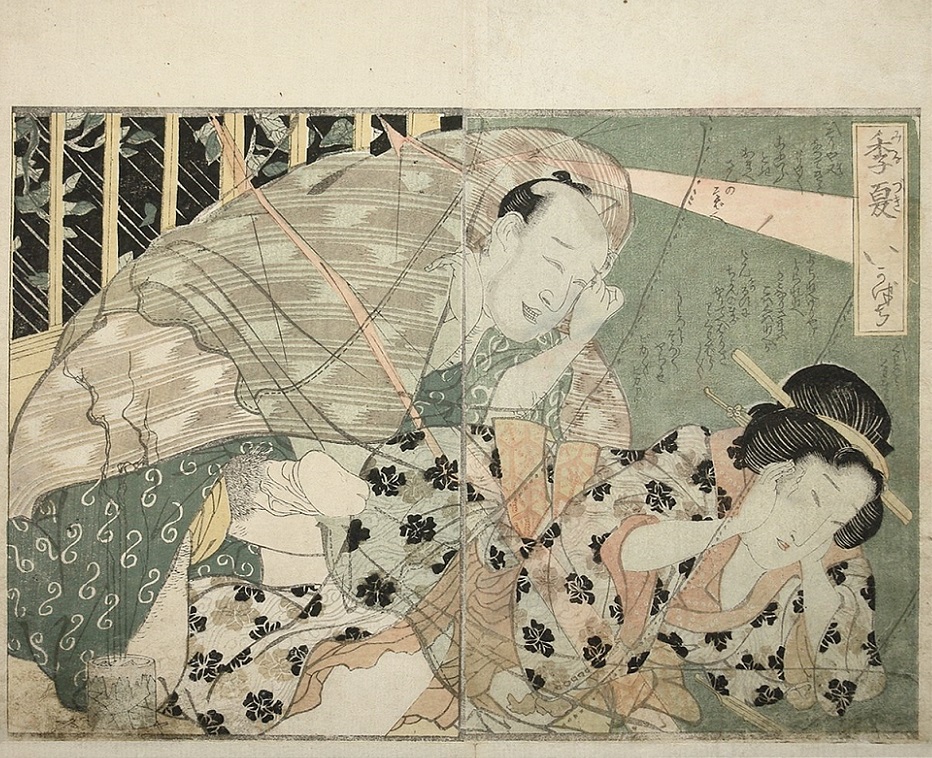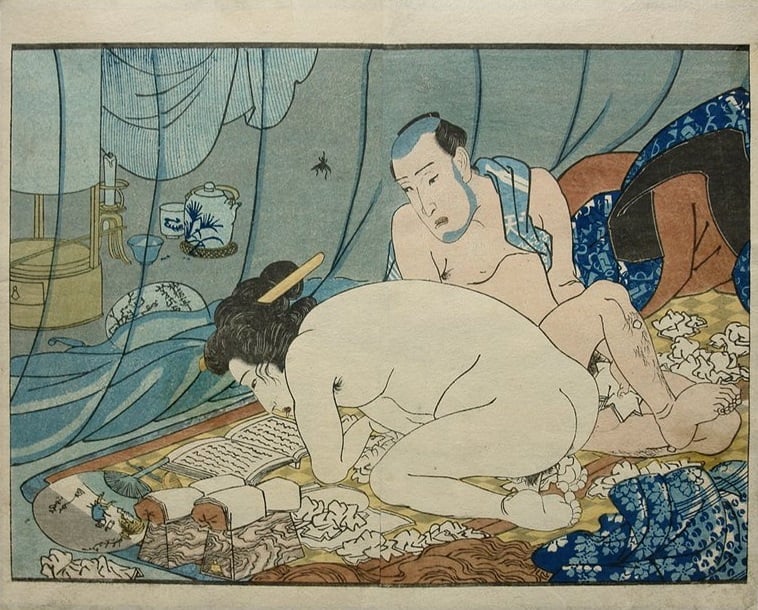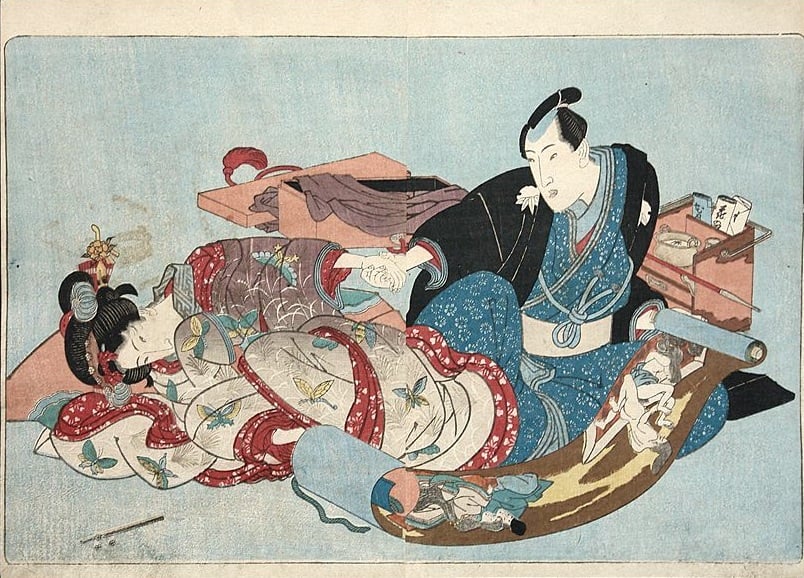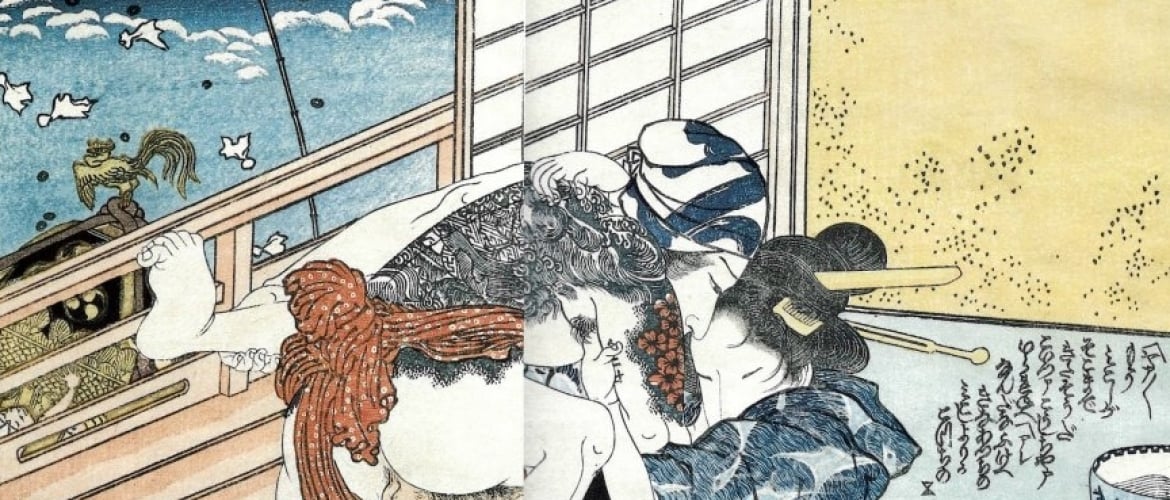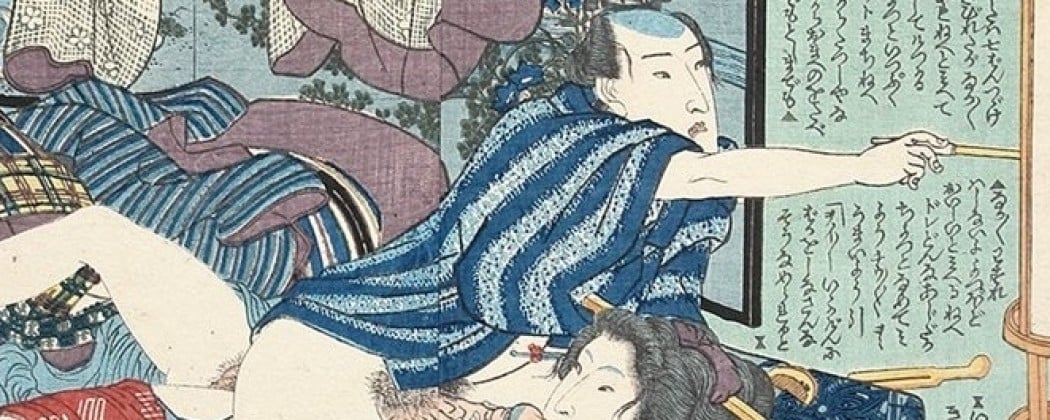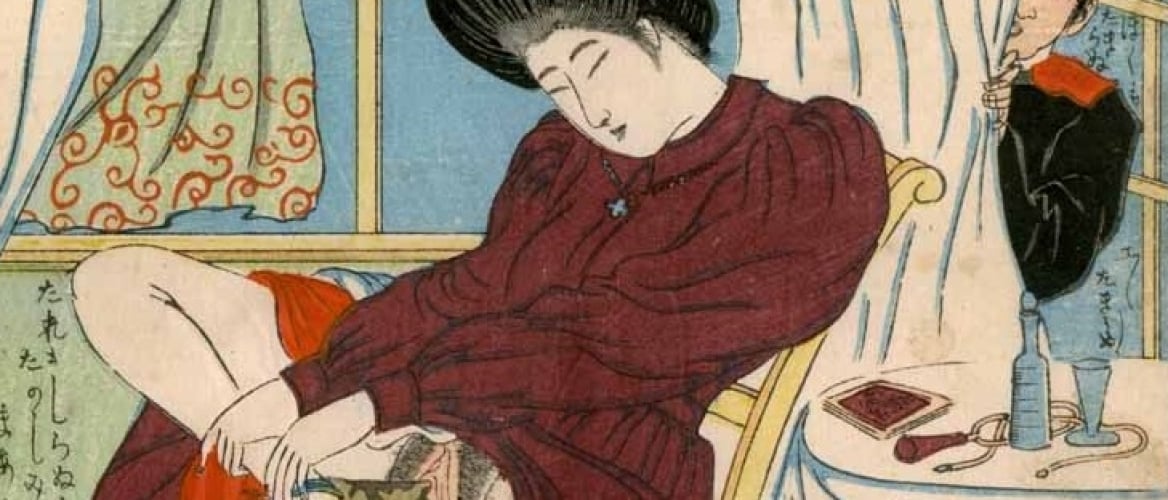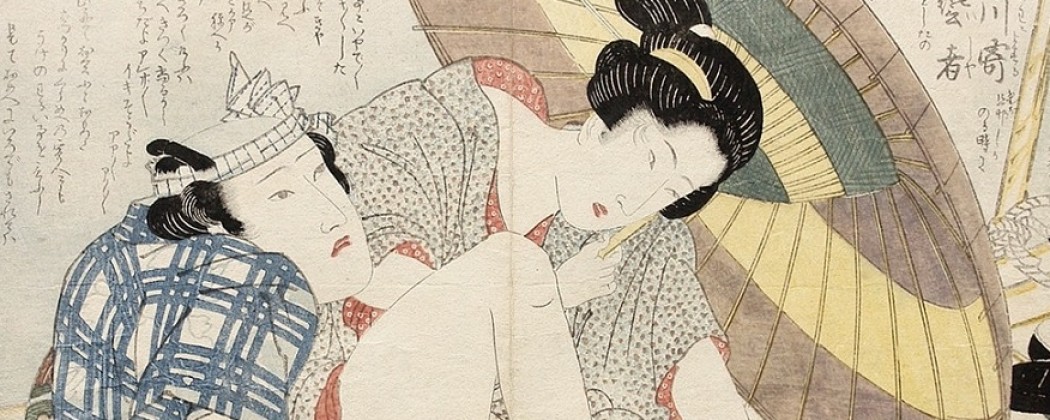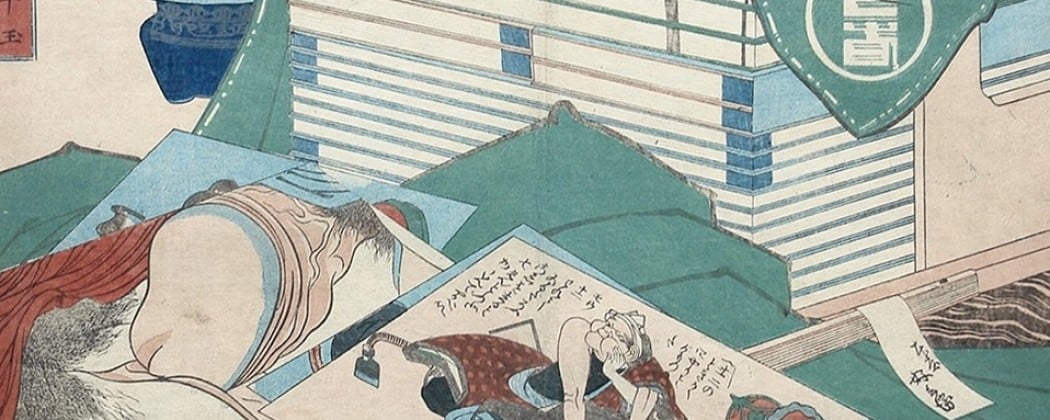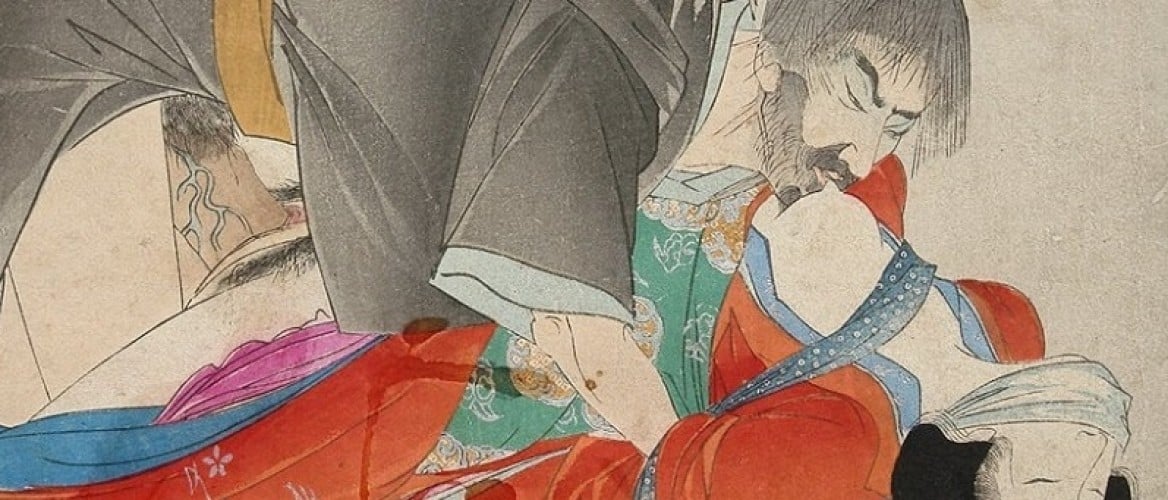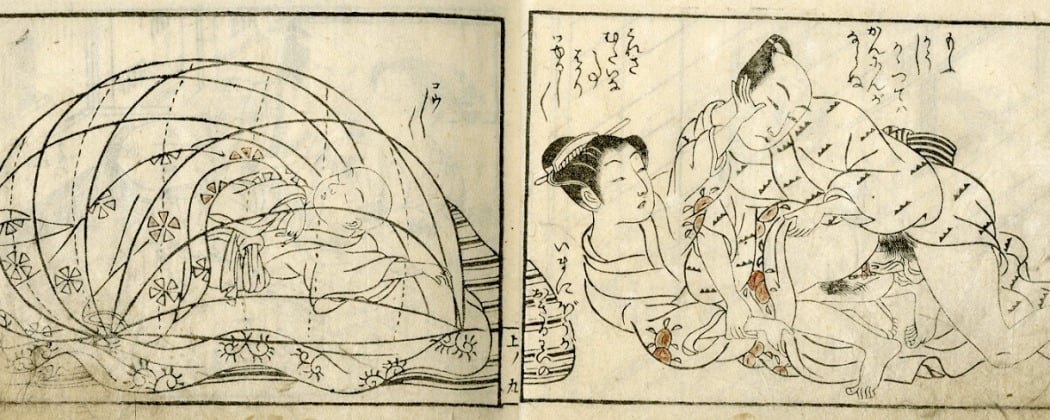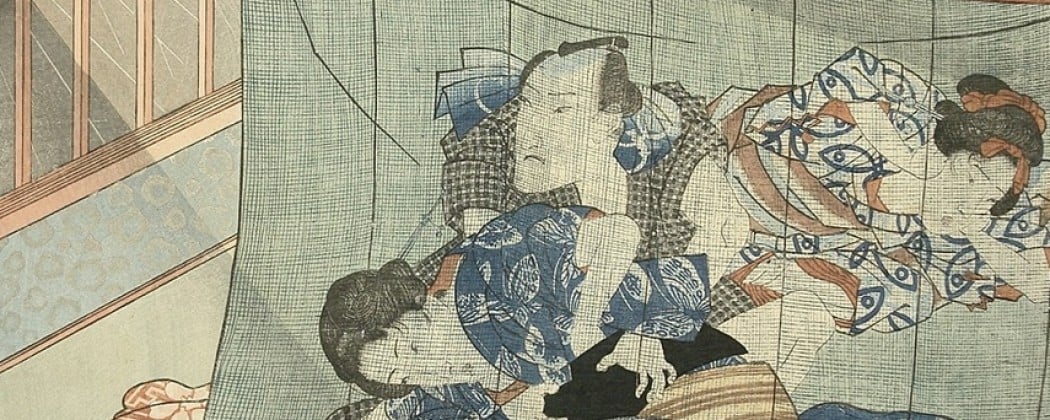
In the mise-en-scène of the shunga idiom the different seasons could be conveyed for instance by the snow in the background, seasonal clothing, popular festivals, specific flowers, an incense burner would indicate summer and a kotatsu (heated table) winter.
Mosquito-netting
Mosquito-netting emphasized the hottest days of summer. They were often ingeniously incorporated in the composition and were a printer’s “nightmare“ due to the complex printing-process.
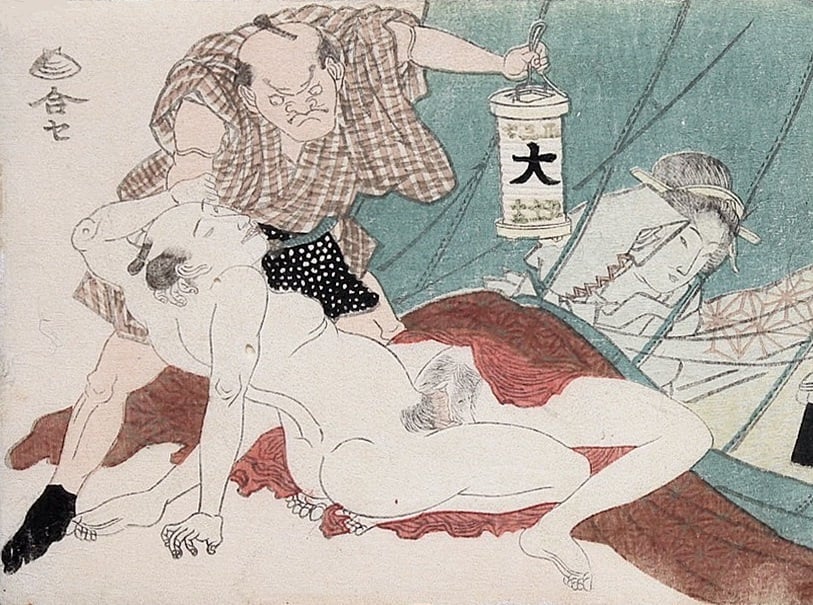
‘Angry man interrupting intimate couple‘ * (c.1820s) attributed to Keisai Eisen (Euro 285,-)
Superimposed
The rendering of the mosquito net is a stunning example of nishiki-e printing techniques, in which vertical and horizontal green lines were superimposed in two printing stages to represent the weave of the hempen net, over which a further screen of faint green was applied. The seafloor-like atmosphere of the interior of the mosquito-net is thus superbly conveyed. Carving the weave of the mosquito-net presented such a challenge that most shunga on this theme depict the lovers outside the raised net.
Below you can find some nice examples of this sub-category by Kunisada and some of his colleagues…
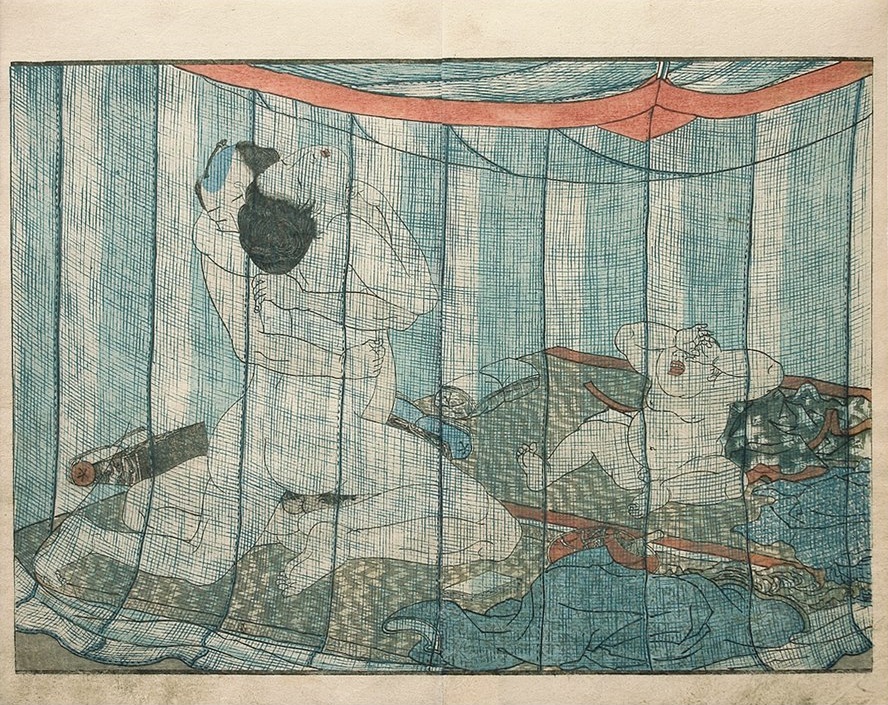
‘Nude copulating couple and weeping baby‘ (c.1839) from the series ‘Shunjō nikubusuma’ by Utagawa Kunisada
Sultry Summer Day
A design completely dominated by the mosquito-net. During a sultry summer day a completely naked couple is making love against the will of their crying infant.

‘Woman sitting on top of her lover‘ (c.1834) from the series ‘Shinsetsu iro no nakidame‘ attrib. to Keisai Eisen (1790-1848) (Sold)
Completely Surrounded
Another image with an intimate couple completely surrounded by a mosquito net.
Longing Gazes
An intimate couple in the early phase of falling in love during a hot summer day. Look at their longing gazes. Because of the busy pattern of the mosquito-net covering the whole design, the added dialogue has been included in the above margin.
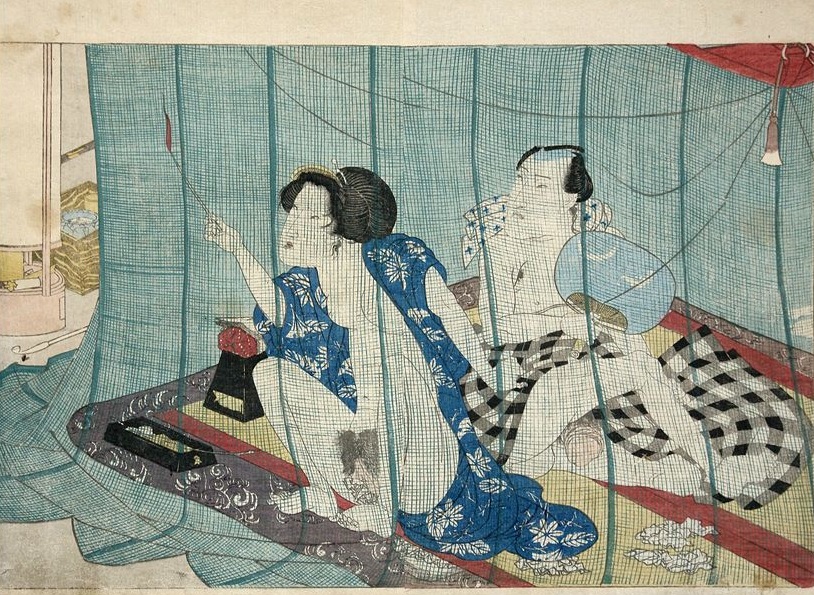
‘Keep the mosquitoes out‘ (c.1827) from the series ‘Shunka shuto shiki no nagame (Spring, Summer, Autumn and Winter: Prospects for the Four Seasons)‘ by Utagawa Kunisada (Euro 885,-)
Under the Shelter
A married couple sitting under the shelter of mosquito-netting during a hot summer day. They just made love and the woman is holding a lighted incense stick to look for an invaded mosquito, while her spouse tries to keep cool by using his fan.
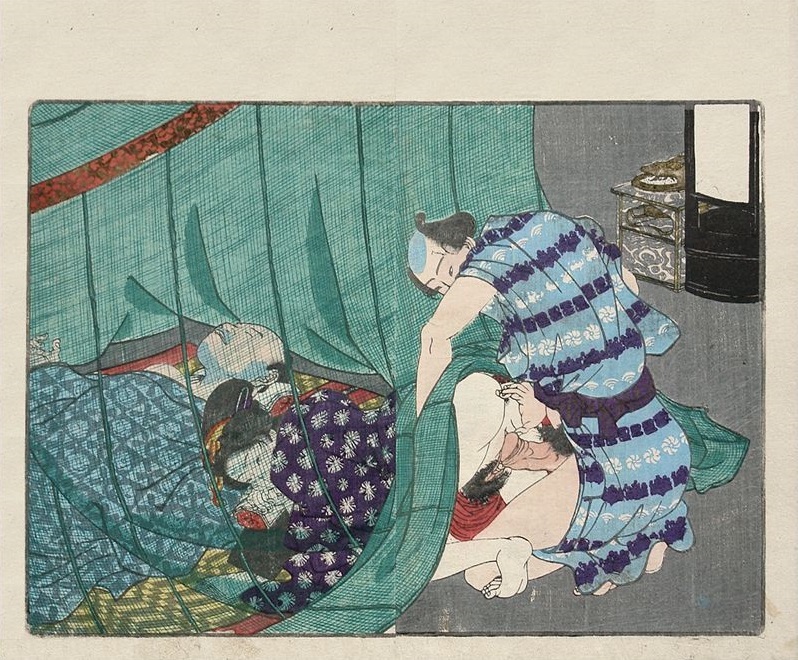
‘The unfaithful wife‘ (c.1842) from the series ‘Viewing Forms in the Four Seasons (Shiki no sugatami)‘ by Utagawa Kunisada
Bodily Zones
This excellent design of the cheating wife has been described by ukiyo-e expert Hayashi Yoshikazu as follows: “…Kunisada also used this in a page of his ‘Viewing Forms in the Four Seasons (Shiki no sugatami)‘, where the viewer sees a woman’s head (and mind) still in bed with her rightful partner, while her genitals — divided by the netting — are outside (illus. 49). Although she is aware of what she does, the status of her sexual act, sectioned off from her head, seems dreamlike, for mental and bodily zones do not match. Pictorially, she is doing nothing wrong.”
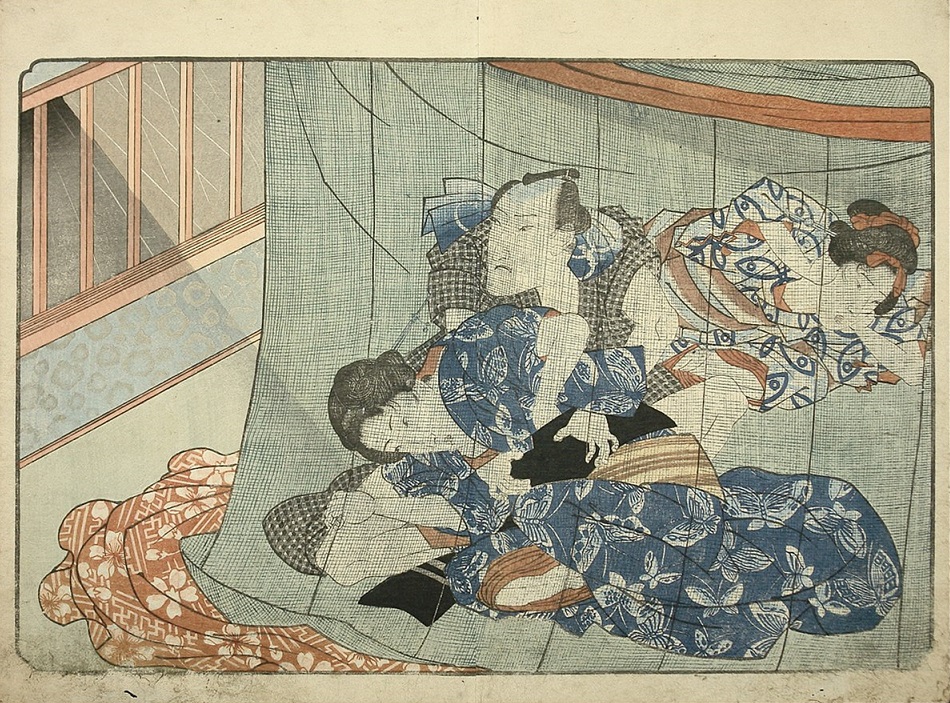
‘Interrupted threesome by heavy thunder‘ (c.1830) from the series ‘Ama no ukibashi (The Floating Bridge of Heaven)‘ by Yanagawa shunga design by Yanagawa Shigenobu (1787-1833) is the 10th plate from his masterpiece ‘ Willow Storm ‘ published in the late 1820s. Palanquin Bearers It exhibits a gang rape scene.."
Fine-meshed
Concealed by a fine-meshed mosquito net, a man takes advantage of the young women’s fear of heavy thunder.
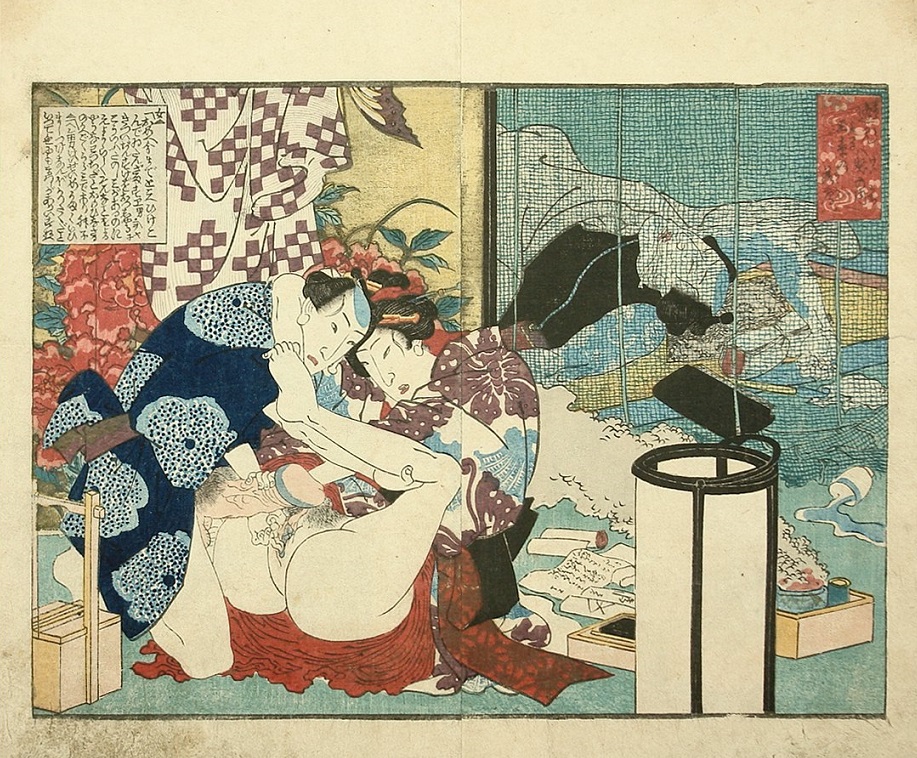
‘Tattooed drunkard behind mosquito-netting‘ (c.1840) attrib. to Utagawa Kunisada
Drunkard’s Mouth
An intricate scene depicting a man sleeping off his hangover lying behind a mosquito net while his deceiving wife is making love in the front part of the room. The image is filled with amusing details such as the drool coming from the drunkard’s mouth, his heavily tattooed upper arms and the fallen sake bowl.
Flashes of Lightning
A dynamic and complicated erotic design by the ukiyo-e master Keisai Eisen. The complexity is in the rendering of the different garments, the mosquito-net and the flashes of lightning which has overtaken this couple !
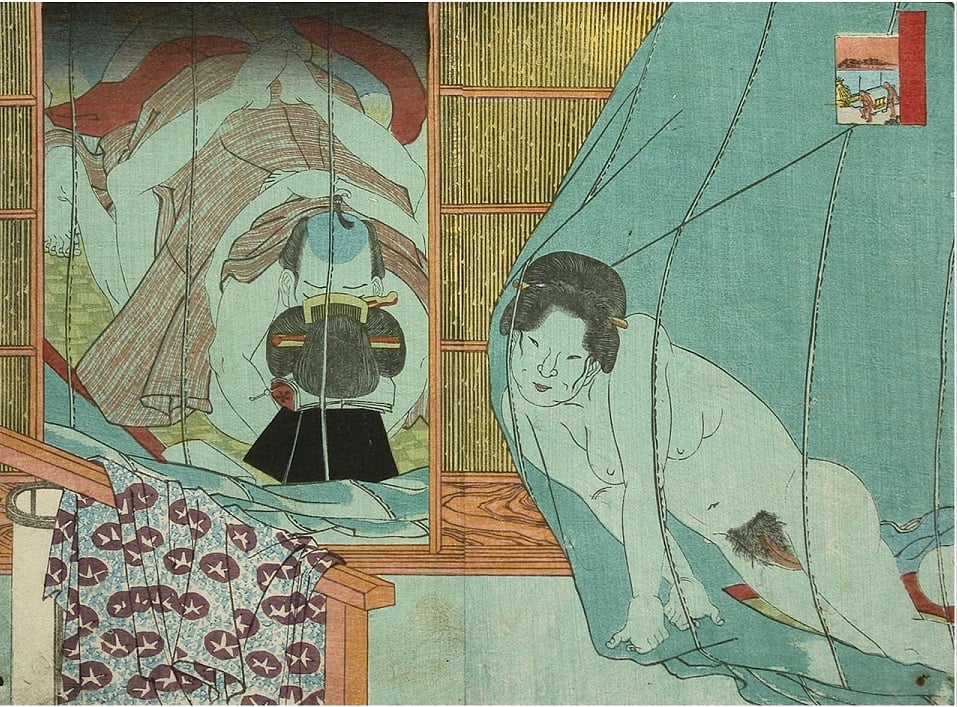
‘Two mosquito-nets‘ (c.1835) from the series ‘Hana no miyakoji‘ by either Utagawa Kunisada or Kuniyoshi
North/South
Two intimate couples divided by two separate mosquito nets. Also striking is the unusual view point of the couple on the left in the back depicted in the north/south position.
Tirelessness
A woman is reading a shunga book for renewed inspiration while the man is cleaning his genitals. The number of used paper tissues scattered around (one sticking out of her private parts) is an indication of their insatiable incessant appetite and tirelessness. Look for the mosquito sitting on the net on the outside.
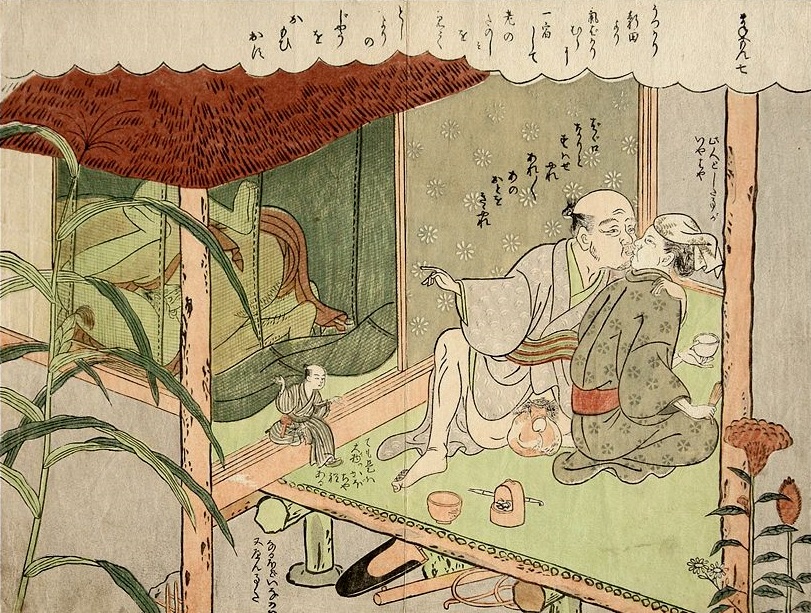
‘Old kissing couple‘ (c.1768) from the series ‘Furyu enshoku Maneemon (The Fashionable Lusty Maneemon)‘ by Suzuki Harunobu (Euro 2350,-)

